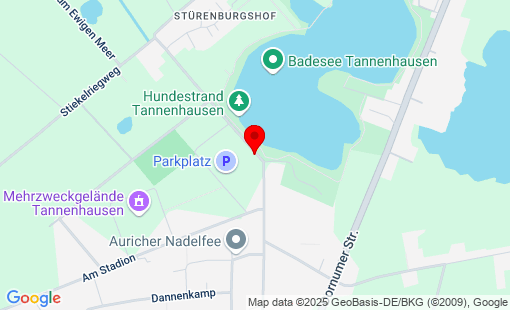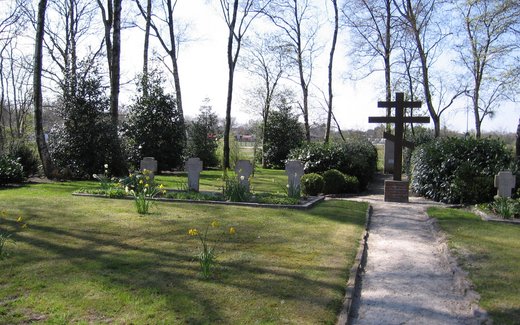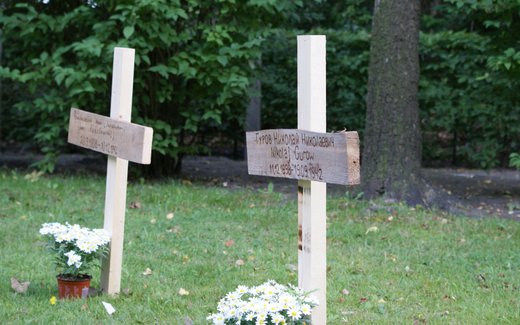Germany
Aurich - Tannenhausen, Kriegsgräberstätte
Total Occupation: 97 fatalities
Total Occupation: 97 fatalities
Open all year round
70 years after the German invasion of the Soviet Union, the mayor of Aurich, Heinz-Werner Windhorst, inaugurated the history and memorial plaque at the Aurich-Tannenhausen war cemetery on June 22, 2011. The plaque is the product of a school project by Aurich pupils in cooperation with the German War Graves Commission (Volksbund Deutsche Kriegsgräberfürsorge). Last summer, six secondary school pupils set about researching the fate of Red Army soldiers who were forced to work at the Tannenhausen Naval Artillery Ordnance Office (MAZ) from 1942 to 1945. After months of research under the guidance of teacher Alwin de Buhr, it was clear that up to 236 Soviet prisoners of war had died in Tannenhausen by the end of the war as a result of hunger, disease, hard labor and abuse. The students' research led them to the Aurich State Archives, among other places. They also evaluated interviews with contemporary witnesses and specialist literature. In a further step, the young people wrote texts and selected pictures to illustrate the panel. The texts, revised by teacher de Buhr and Volksbund school officer Marco Wingert, can now be seen on the plaque. It provides information about the prisoner of war camp in Tannenhausen, the situation of Soviet prisoners of war and explains the historical background. It makes it clear that the Red Army soldiers did not fall victim to the general events of the war, but to the Nazi ideology of those in power at the time. Incidentally, not only German visitors to the cemetery can read about this, but also Russian-speaking visitors. The plaque has been designed in two languages so that relatives, among others, can get an idea of the fate of their relatives. The work on the Tannenhausen war cemetery is not yet complete with the erection of the plaque, the creation of which was supported by the town and district of Aurich, among others. In the course of his research, Alwin de Buhr identified 74 names of Soviet prisoners of war. These are to be made visible in the coming months. In August, German and Russian young people will discuss how this can be done as part of a binational seminar. In summer 2010, 21 names were already provisionally made visible on wooden signs. Text & photos: Marco Wingert 2011






